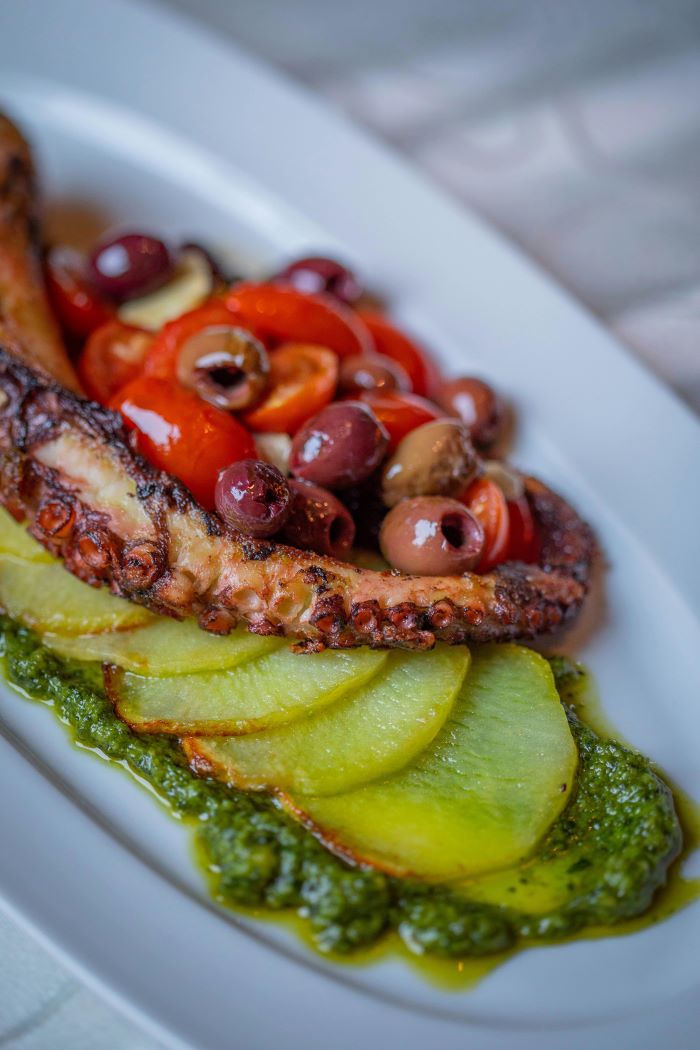Rise and Grind with Pesto
 Every culture has a fresh herb-based sauce.
Every culture has a fresh herb-based sauce.
Here in New Jersey, we are surrounded by pesto, but herb-based sauces are found universally. Let’s have a look at the ancient practice of smashing up herbs to build flavor in cuisine.
Herbaceous Roots
We tend to call these sauces pesto, meaning any sauce that derives its essence from crushing ingredients into a paste. The Italian root of “pesto,” pestare, means to pound or crush. Pesto is an outgrowth of the ancient Roman moretum, the direct inspiration. Moretum is essentially pesto, but eaten more with bread, or as a battlefield snack.
A Sauce By Any Other Name
The South American equivalent of pesto is chimichurri, pistou is a French herb-based sauce that also shows up in Mexican cuisine, and kroeung is an herb-based paste used as the base of much Khmer cuisine. They all share the commonality of taking wild-grown or domesticated herbs and grinding them up with other ingredients. Adding nuts, oil, cheese, and salt in a concentrated batch allows flavors to develop more intensely.
Tradition and Variation
Traditional pesto is made with garlic, pine nuts, lemon, salt, basil, hard cheese, and olive oil. A small number of folks have a pine allergy, so walnuts provide a great substitution while still providing a nutty crunch. If possible it’s good to use pine, as the pine tree – the world’s most common tree – contains proanthocyanidin, tannins, and resins, which can have beneficial human use. Pine (sometimes called pinyon) nuts are a less-common nut, and delicious. You are also free to experiment, as the combination of a few core ingredients provides endless possible permutations. Chefs have experimented with a dizzying array of ingredients in pesto, including coconut, turmeric, avocado, parsley, ginger, and spirulina.
and spirulina.
The Ever-Fashionable Mortar & Pestle
The key to pesto is, perhaps, that wonderful blast of aromatics you get from fresh-crushed herbs, and nothing works better than an old-fashioned mortar & pestle. It requires no electricity, no wifi, no update patches, and is one of the most time-trusted and durable kitchen tools. A mortar & pestle can be a great heirloom to pass down in families. With a little bit of elbow grease, you can unleash the anti-inflammatory, flavor-building, and aromatic aspects of herbs. “I love pesto,” Chef Becky says. “It’s a great way to use up herbs and greens that are going to wilt; I make little pesto ice cubes that I can toss into dishes to add instant flavor. I make gremolata quite a bit, which is a distant cousin of pesto.” The Chef advises tossing a little nutritional yeast – a popular topping on popcorn at artsy theaters – into your pesto to add nutrients and a soft but distinct flavor.
Happy pesto-ing, and let us know what your favorite recipes or variations are!







